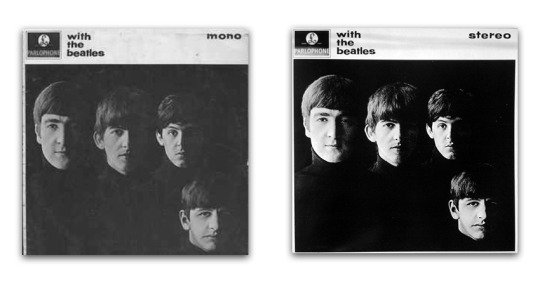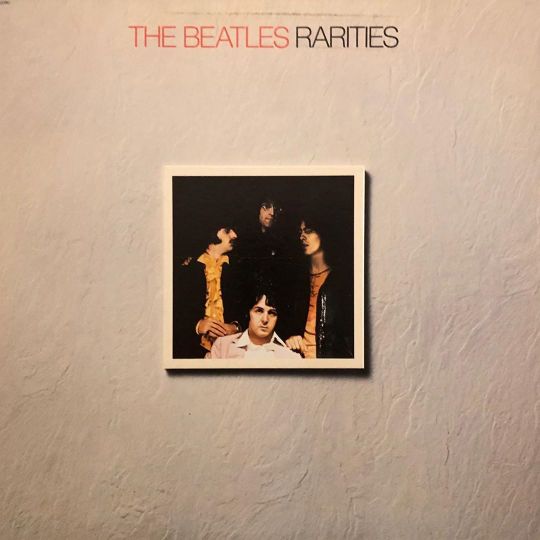#monovinyl
Text


January 12, 1928
**excerpt from Alexia's private journal**
I was able to attend a fascinating lecture given by Friar Julius Arthur Nieuwland at Simtre Dame University. I attended as a junior researcher alongside my fellow scientists. I should be thankful that I was even allowed to go, but I'm still insulted that I wasn't listed as a scientist or even by my degree. Women, apparently, don't have the mental capacity for such things. Dr. Bolton was instrumental in ensuring that I attended which I am thankful for.
**excerpt from Alexia's research notebook**
Nieuwland has managed to produce divinyl acetylene. His knowledge of acetylene chemsitry is unmatched. Divinyl acetylene is a jelly that firms into an elastic compound very similar to rubber when passed over sulfur dichloride. My plants produce a rubbery gum naturally, what is the difference? I believe the plants take a simpler approach. Maybe instead of divinyl we should look at a monovinyl acetylene and see if it reacts differently to other chemicals.
#waldrop records#decades challenge#sims 4 screenshots#ts4 decades challenge#sims 4 historical#ts4 historical#waldrop gen 3#waldrop 1920s
6 notes
·
View notes
Photo

Love this surprise hit of a record—Ray Charles, looking for a new niche in the pre-Beatles lull in popular interest in rock n’ roll and R&B, covers country songs in pop, soul, and R&B versions. Country & Western was white music and there was no crossover at the time, but the record was a smash, opening soul up to country influences and vice versa. Ray Charles was always a tastemaker. Picked up this mono copy earlier this week, and it’s a joy. Go get one, they’re so plentiful you can probably find one for $5. #raycharles #soul #countrymusic #mono #monovinyl #vinyl #vinyladay #lp #vinyloftheday #vinyligclub #vinyljunkie #vinylcommunity #instavinyl #vinylgram #recordcollector #nowspinning https://www.instagram.com/p/CLdQVYgsfgF/?igshid=1rmiws1tqjgss
#raycharles#soul#countrymusic#mono#monovinyl#vinyl#vinyladay#lp#vinyloftheday#vinyligclub#vinyljunkie#vinylcommunity#instavinyl#vinylgram#recordcollector#nowspinning
5 notes
·
View notes
Text
Mono vs Stereo 101

Back in the 60s, many albums were released in both mono and stereo versions. Ever since, collectors have debated which mix is best.
Why? What’s the difference? Which should you buy?
Discogs spoke to Larry Crane, studio producer and founder of Tape Op magazine, to find the answers in Mono vs Stereo: What You Should Know.
1 note
·
View note
Photo

Here concludes @thebeatles section of my #recordsontheshelf or #vinylatoz, from the Rarities album, (1980), which was the last Beatles product I got before the CD era, to all the delicious mono reissues I managed to obtain, revelatory experiences all. If you can only get one, go with Mono Masters. Stay tuned to see what comes next! #vinyl #vinylcollection #vinylcollector #vinylgeek #vinylgram #monovinyl https://www.instagram.com/p/B5TzuS8AFEa/?igshid=2mlkaz6zut3p
0 notes
Photo

#bobdylan #blondeonblonde #columbiarecords 1966 SUPER RARE, CLEAN MONO FIRST PRESS w/ ORIGINAL SHRINK w/ CRAZY RARE HYPE STICKER and ORIGINAL WITHDRAWN COVER #mono #monovinyl #classicrock #folkrock #bluesrock #dylan #bobdylanvinyl #hypesticker (at Siren Records) https://www.instagram.com/p/ByTbx06Ag9J/?igshid=kodqfbsgf2po
#bobdylan#blondeonblonde#columbiarecords#mono#monovinyl#classicrock#folkrock#bluesrock#dylan#bobdylanvinyl#hypesticker
0 notes
Photo

#nowplaying #TheBeatles #HELP! #1963 #ParlophoneRecords #monovinyl #vinyl #vinylrules #vinyligclub #vinylcommunity #nowspinning #onmyturntable #GeorgeHarrison #JohnLennon #PaulMcCartney #RingoStarr - Recording Produced by #GeorgeMartin, Photography #RobertFreeman
#help#paulmccartney#nowplaying#nowspinning#georgeharrison#johnlennon#monovinyl#1963#onmyturntable#parlophonerecords#georgemartin#vinyligclub#vinyl#vinylrules#vinylcommunity#ringostarr#thebeatles#robertfreeman
0 notes
Text
Swelling kinetic study of poly(methyl vinyl ether-co-maleic acid) hydrogels as vehicle candidates for drug delivery
This review highlights recent progress in the synthesis and application of vinyl ethers (VEs) as monomers for modern homo- and co-polymerization processes. VEs can be easily prepared using a number of traditional synthetic protocols including a more sustainable and straightforward manner by reacting gaseous acetylene or calcium carbide with alcohols. The remarkably tunable chemistry of VEs allows designing and obtaining polymers with well-defined structures and controllable properties. Both VE homopolymerization and copolymerization systems are considered, and specific emphasis is given to the novel initiating systems and to the methods of stereocontrol.
The composition of chlorophyll-precursor pigments, particularly the contents of diethylene glycol divinyl ether, in etiolated tissues of higher plants were determined by polyethylene-column HPLC (Y. Shioi, S. I. Beale [1987] Anal Biochem 162: 493-499), which enables the complete separation of these pigments. DV-Pchlide was ubiquitous in etiolated tissue of higher plants. From the analyses of 24 plant species belonging to 17 different families, it was shown that the concentration of DV-Pchlide was strongly dependent on the plant species and the age of the plants. The ratio of DV-Pchlide to MV-Pchlide in high DV-Pchlide plants such as cucumber and leaf mustard decreased sharply with increasing age. Levels of DV-Pchlide in Gramineae plants were considerably lower at all ages compared with those of other plants. Etiolated tissues of higher plants such as barley and corn were, therefore, good sources of MV-Pchlide. Absorption spectra of the purified MV- and DV-Pchlides in ether are presented and compared.
Both epoxides and vinyl ethers can be polymerized cationically albeit through different intermediates. However, in the case of epoxide-vinyl ether mixtures the exact mechanism of cationically initiated polymerization is unclear. Thus, although vinyl ethers can be used as reactive diluents for epoxides it is uncertain how they would affect their reactivity. Cationic photocuring of diepoxides has many industrial applications. Better understanding of the photopolymerization of epoxy-vinyl ether mixtures can lead to new applications of cationically photocured systems. In this work, photo-DSC and real-time Fourier Transform Infrared Spectroscopy (RT-FTIR) were used to study cationic photopolymerization of diepoxides and vinyl ethers. In the case of mixtures of aromatic epoxides with tri(ethylene glycol) divinyl ether, TEGDVE, photo-DSC measurements revealed a greatly reduced reactivity in comparison to the homopolymerizations and suggested the lack of copolymerization between aromatic epoxides and TEGDVE. On the other hand, for mixtures of 3,4-epoxycyclohexylmethyl-3',4'-epoxycyclohexane carboxylate, ECH, with TEGDVE the results indicated high reactivity of the blends. The polymerization mechanism might include copolymerization. To examine this mechanism, mixtures of the ECH with a tri(ethylene glycol) mono-vinyl ether, TEGMVE, were studied by both photo-DSC and RT-FTIR. Principal component analysis (PCA) proved to be an efficient tool in analyzing a large matrix of the spectral data from the polymerization system. PCA was able to provide insight into the reasons for the differences among replicated experiments with the same composition ratio and supported the hypothesis of copolymerization in the ECH/TEGMVE system. Thus, blends of cycloaliphatic epoxides and vinyl ethers seem to have a great potential for applications in high-productivity industrial photopolymerization processes.
Vinyl acetate is an organic compound with the formula CH3CO2CH=CH2. This colorless liquid is the precursor to polyvinyl acetate, an important industrial polymer.[3]
The worldwide production capacity of 1,4-bis(vinyloxy)-butane was estimated at 6,969,000 tonnes/year in 2007, with most capacity concentrated in the United States (1,585,000 all in Texas), China (1,261,000), Japan (725,000) and Taiwan (650,000).[4] The average list price for 2008 was $1600/tonne. Celanese is the largest producer (ca 25% of the worldwide capacity), while other significant producers include China Petrochemical Corporation (7%), Chang Chun Group (6%), and LyondellBasell (5%).[4]
It is a key ingredient in furniture glue.[5]
It can be polymerized to give polyvinyl acetate (PVA). With other monomers it can be used to prepare various copolymers such as ethylene-vinyl acetate (EVA), vinyl acetate-acrylic acid (VA/AA), polyvinyl chloride acetate (PVCA), and polyvinylpyrrolidone (Vp/Va copolymer, used in hair gels).[8] Due to the instability of the radical, attempts to control the polymerization by most "living/controlled" radical processes have proved problematic. However, RAFT (or more specifically, MADIX) polymerization offers a convenient method of controlling the synthesis of PVA by the addition of a xanthate or a dithiocarbamate chain transfer agent.
Vinyl acetate undergoes many of the reactions anticipated for an alkene and an ester. Bromine adds to give the dibromide. Hydrogen halides add to give 1-haloethyl acetates, which cannot be generated by other methods because of the non-availability of the corresponding halo-alcohols. Acetic acid adds in the presence of palladium catalysts to give ethylidene diacetate, CH3CH(OAc)2. It undergoes transesterification with a variety of carboxylic acids.[9] The alkene also undergoes Diels–Alder and 2+2 cycloadditions.
Tests suggest that vinyl acetate is of low toxicity. Oral LD50 for rats is 2920 mg/kg.[3]
On January 31, 2009, the Government of Canada's final assessment concluded that exposure to vinyl acetate is not harmful to human health.[12] This decision under the Canadian Environmental Protection Act (CEPA) was based on new information received during the public comment period, as well as more recent information from the risk assessment conducted by the European Union.
In the context of large-scale release into the environment, it is classified as an extremely hazardous substance in the United States as defined in Section 302 of the U.S. Emergency Planning and Community Right-to-Know Act (42 U.S.C. 11002), under which it "does not meet toxicity criteria[,] but because of its acute lethality, high production volume [or] known risk is considered a chemical of concern". By this law, it is subject to strict reporting requirements by facilities that produce, store, or use it in quantities greater than 1000 pounds.[13]
To date, methods of quantum-chemical calculations have been increasingly developed. As a result, it is possible to estimate the geometry of molecules, calculate the stability of intermediate products and transition states. In the experimental method of calculating such results for most reactions, along with a multi-stage process, there are difficulties associated with the appearance of intermediate stages and the presence of intermediate reaction products in an extremely small time.
Radical copolymerization of polyethylene glycol maleate with Di(ethylene Glycol) monovinyl ether of monoethanol amine has been performed for the first time. Radical co- and terpolymerization of the systems polyethylene glycol maleate with acrylamide and 1,4-butanediol monovinyl ether of monoethanol amine has been studied. Molecular weight of polyethylene glycol maleate has been determined using light scattering and gel permeation chromatography. The compositions of the polymers and copolymerization constants of the studied systems have been determined. The composition of the copolymers has been found using gas chromatography. Kinetic curves show that with increasing molar fraction of acrylamide in the solution the reaction rate and swelling capacity of the copolymers increase. It has been shown that the composition of terpolymers determined experimentally differs considerably from the one calculated taking into account obtained constants of copolymerization. Deviations found are due to various intermolecular interactions in these systems. The possibility of controlling the properties of network copolymers of polyethylene glycol maleate by changing external factors has been studied. Swelling capacity of the copolymers investigated was studied using gravimetric method.
Hydrogels have been widely used for various biomedical and pharmaceutical applications due to their biocompatibility, high water content and rubbery nature, which resemble natural tissue. Polyethylene glycol (PEG) crosslinked poly(methyl diethylene glycol monovinyl ether and maleic acid) (PMVE/MA) hydrogel is widely studied as a vehicle for various types of drug delivery. It has been reported that swelling and diffusion property of hydrogel are important features for their effectiveness. Higher swelling of PMVE/MA hydrogel facilitates greater amount of drug to be delivered. However, delivery of high molecular weight drugs such as ovalbumin and bevacizumab is still a challenge with existing formulation of PMVE/MA hydrogels. This study aims to optimise PMVE/MA hydrogel formulations and determine the swelling kinetics of different hydrogel formulations.
Methods
PMVE/MA hydrogels were prepared by inducing esterification reaction with PEG. Each formulation of hydrogel consists of different concentration and molecular mass of PMVE/MA and PEG. Swelling kinetics of each formulation were studied by calculating % swelling and second order kinetic model was used to calculate the swelling rate constant (Ks) and degree of swelling at equilibrium (Seq). The effect of different foaming agents (Na2CO3 and NaHCO3) on the swelling of hydrogel was also studied.
Results
Our results shows that hydrogels synthesised from higher molecular weight 15% (w/w) PMVE/MA and 7.5 % (w/w) PEG 12,000 have 2200% swelling. The swelling of hydrogel decreased with increasing concentrations of PMVE/MA and PEG. Hydrogel mixture containing PEG 12,000 with longer polymer chains resulted in better swelling compared to PEG 10,000. Meanwhile high concentration of foaming agents (up to 3% w/w) has a positive effect on hydrogel swelling.
Conclusion
The hydrogels formulation containing 15% (w/w) PMVE/MA and 7.5 % (w/w) PEG 12,000 in this study yielded 1.28 times greater swelling compared to previously reported formulation. It is proposed that, this hydrogel would serve as a better vehicle candidate for macromolecular drug delivery.
0 notes
Link
0 notes
Photo

How long had you been listening to this album before you learned that it wasn’t a “real” Beatles album? It was cobbled together by Capitol for North America: side 1 is the double EP released in Britain with a cover that is just the blue part of this version without the yellow & track listing; side 2 is made of non-album singles. It was such a successful import in Britain that when EMI standardized the worldwide discography for the CD era they used the US version instead of the UK. Hence why my 2014 mono reissue replicates Capitol labels instead of Parlophone. I have been a Beatles fan since late elementary school, so I’d been listening for at least ten years before I knew any of that! #beatles #thebeatles #beatlesvinyl #mono #monovinyl #vinyl #vinyladay #lp #vinyloftheday #vinyligclub #vinyljunkie #vinylcommunity #instavinyl #vinylgram #recordcollector #nowspinning https://www.instagram.com/p/CLfwa-LMyTh/?igshid=n4t6g50z9f95
#beatles#thebeatles#beatlesvinyl#mono#monovinyl#vinyl#vinyladay#lp#vinyloftheday#vinyligclub#vinyljunkie#vinylcommunity#instavinyl#vinylgram#recordcollector#nowspinning
4 notes
·
View notes
Photo

#bobdylan #bringingitallbackhome #columbiarecords 1965 SUPER CLEAN MONO FIRST PRESS in FULL SHRINK w/ CRAZY RARE HYPE STICKER and ORIGINAL CO INNER #mono #monovinyl #classicrock #folkrock #dylan #hypesticker #bobdylanvinyl #bluesrock (at Siren Records) https://www.instagram.com/p/ByTNzcTJTIB/?igshid=11hbtdagujdyz
#bobdylan#bringingitallbackhome#columbiarecords#mono#monovinyl#classicrock#folkrock#dylan#hypesticker#bobdylanvinyl#bluesrock
0 notes